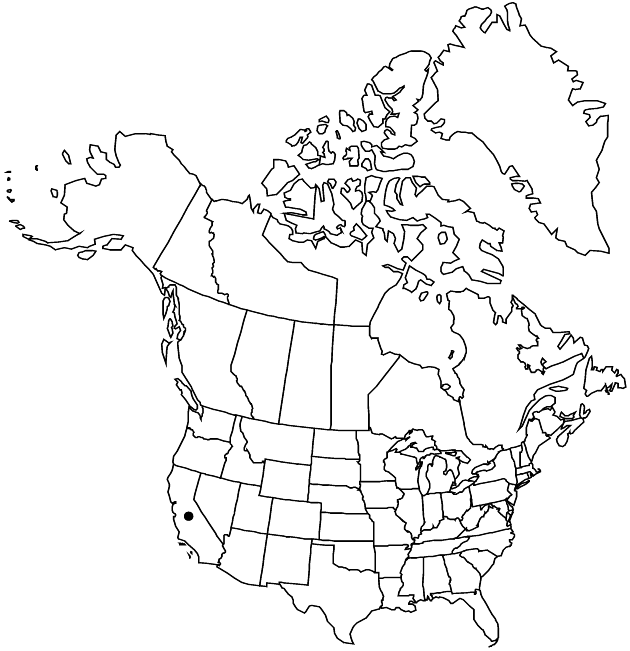Cirsium crassicaule
Fl. W. Calif., 506. 1901.
Annuals or biennials, (60–)100–300 cm; taprooted. Stems usually 1, erect, stout, (hollow, 2–10 cm diam. at base), openly branched distally, thinly arachnoid, villous with jointed trichomes, at least proximally. Leaves: blades elliptic to broadly oblanceolate, 15–70 × 30–150+ cm, flat, pinnatifid 1/2–2/3 distance to midvein, larger usually with broad sinuses, lobes broad, few lobed or dentate, main spines 3–8 mm, abaxial faces gray-tomentose, adaxial thinly arachnoid-tomentose, sometimes midveins with jointed trichomes; basal present or withered at flowering, winged-petiolate; principal cauline sessile, progressively reduced distally, bases clasping or short-decurrent 1–2 cm; distal cauline reduced, becoming bractlike, sometimes spinier than proximal. Heads 1–several at branch tips, closely subtended by clustered leafy bracts or not, collectively forming open, corymbiform or paniculiform arrays. Peduncles 0–15 cm. Involucres ovoid to campanulate, 1.5–3 × 1.5–3 cm, ± glabrous. Phyllaries in 5–7 series, weakly unequal, dark green to brownish, lanceolate (outer) to linear (inner), abaxial faces without (or with very obscure) glutinous ridge; outer and middle appressed or apices spreading, at least outer irregularly spiny-fringed, finely serrulate, spines slender, 3–5 mm; apices of inner erect, abaxial faces gray-tomentose, ± twisted. Corollas pale rose-purple (white), 19–26 mm, tubes 9–12 mm, throats 4–6 mm, lobes 5–9 mm; style tips 3.5–4.5 mm. Cypselae dark brown, 5–5.5 mm, collars narrow, ± stramineous; pappi 15–20 mm. 2n = 32.
Phenology: Flowering spring (Apr–Jun).
Habitat: Freshwater marshes, canal banks
Elevation: 5–100 m
Discussion
Cirsium crassicaule is known only from a few sites in the San Joaquin Valley. Some populations are threatened by habitat modification and development pressures.
Selected References
None.
